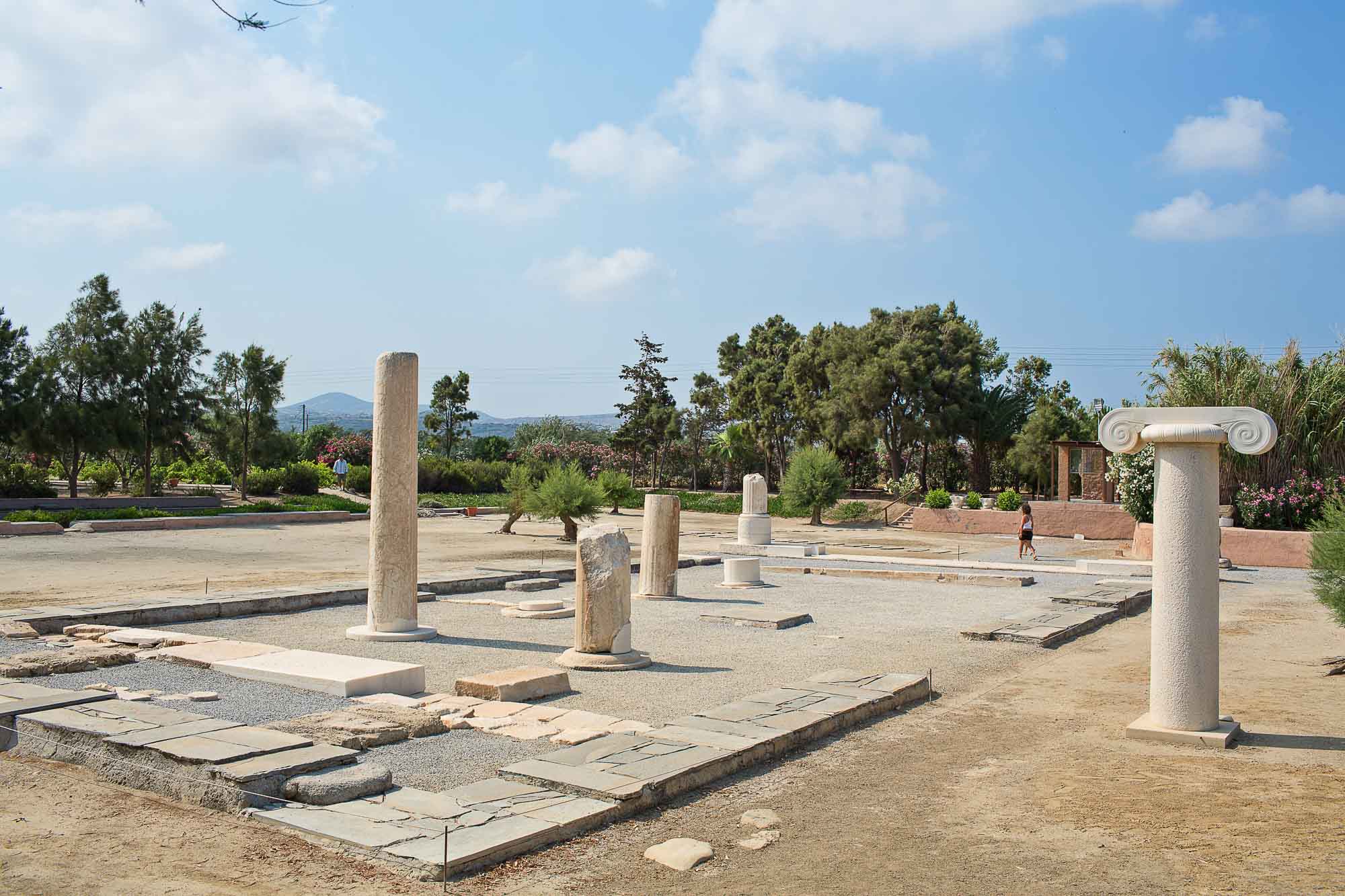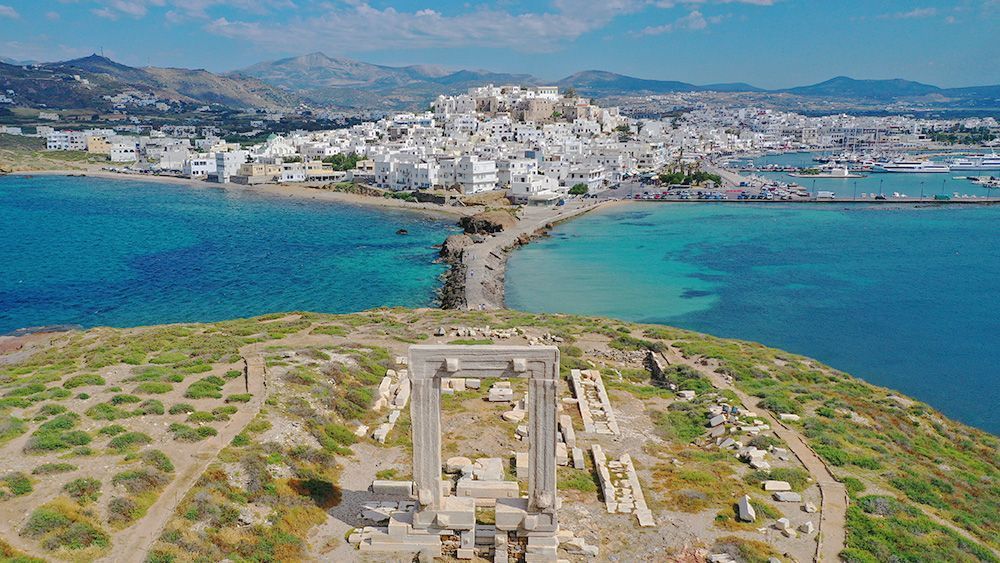A spot of white in the turquoise waters of the Aegean Sea, the island of Naxos is a unique blend of ancient ruins and beach culture. The largest of the Cycladic Islands, Naxos is the childhood home of none other than Zeus, king of the gods. Upon arrival in Naxos, hike over a causeway to Palatia, where the Portara, a stone gateway to an ancient temple that no longer exists, stands alone, the symbol of the island. At sunset, the views of the island, and the sea beyond, are breathtaking.
1. NAOS TOU APOLLONA – PORTARA
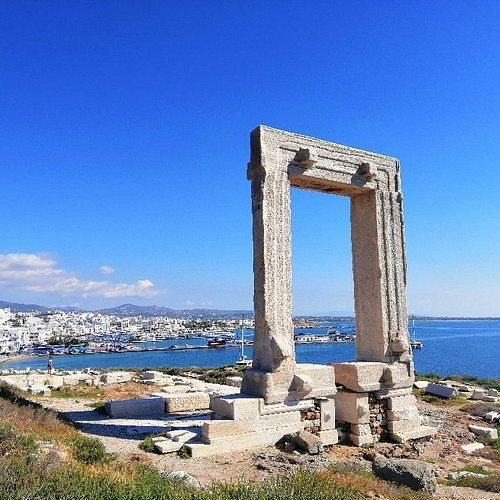
Naxos’ Temple of Apollo – Portara, a huge marble gate and the single remaining part of an unfinished temple of Apollo of 530 BC, is the island’s emblem and main landmark. Standing on the islet of Palatia, at the entrance to Naxos harbor, it comprises four marble parts weighing about 20 tons each. Its construction was initiated by the tyrant Lygdamis in the 6th century BC, according to the specifications of the temples of Olympic Zeus in Athens and of the goddess Hera on Samos. It measured 59m in length and 28m in width, and its entrance was on the western side of Naxos –an unusual feature for an Ionian-style temple. The monumental gate seen today, which led from the vestibule to the main part of the temple, lies amidst traces of its foundations and those of a peripheral colonnade that was never completed. An arched Christian church was built on the ruins in the 6th or 7th century. The islet of Palatia has been associated with the worship of Ariadne — a Cretan princess — and Dionysus, the god of wine and merriment. Because, according to mythology, Dionysus abducted the princess at the beachside of Palatia, the islet is considered the place where Dionysian festivities were first held. Naxos’ Temple of Apollo – Portara today is connected with the Naxos mainland via a paved footpath. The spot offers one of the most enchanting sunsets in Greece.
2. TOWER OF ZEVGOLIS
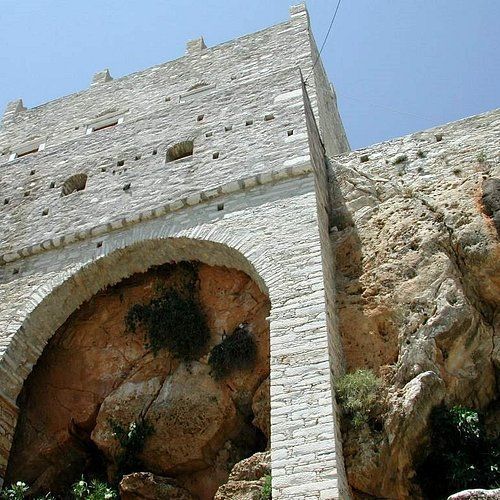
Zevgolis Tower is built on a rock located close to the center of the village of Apiranthos on its main road. This impressive 17th century tower initially belonged to Kastri family and their coat of arms depicting a lion is on the lintol of the main entrance. The structure is a two-storey Venetian-era stone edifice that has been renovated and is now inhabited, mainly during the summer season. Visitors are permitted to access the verandas as well as the interior when the owners are present.
The ancestors of the present owners acquired it immediately following the Greek Revolution in 1821. As was also the case with the Barozzi Tower in Filoti, this tower served as a residence for feudal lords of the period. Later, it became property of Somarippa family, according to the inscription of 1677 found in the building. After the revolution of 1821, it passed to Zevgolis family. The tower is a unique architectural example of a fortress and it stands out thanks to its dimensions.
The tower features Aegean-style arches and many verandas and balconies which are well worth going up to for the view.
Parking space is available by the village entrance. Public transport runs from Chora, Naxos’s main town. Shuttles are more frequent during the summer months.
3. TEMPLE OF DEMETER
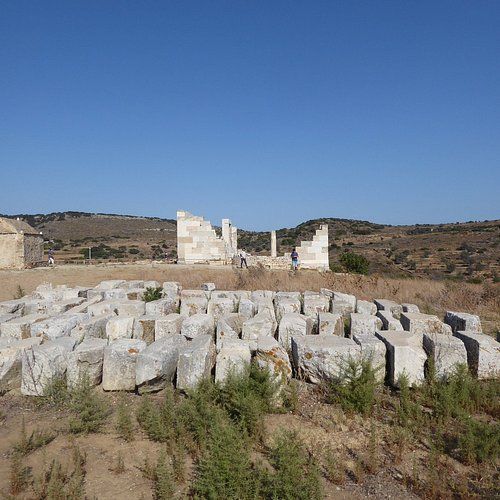
On a mound hulking over the beginnings of a fertile valley in the Gyroulas district, south of the village of Sagrion Naxos, the inhabitants of the area began worshipping (outdoors) the deities of nature in the 8th century BC. A monumental, all-marble temple was constructed at the spot in the late 6th century. According to a number of indications, the sanctuary was dedicated to the deities of Apollo, Demeter and Kore, with an emphasis on their earthen characteristics. The worshipping of earth deities, which was related to fertility and the growth of vegetation, is deduced by the erection of the sanctuary in the midst of an area rich in productive resources and appropriate mainly for farming. The sanctuary also served as a factor of social cohesion in the broader district, besides being one of the most significant steps in the development of classical Greek architecture. During the paleo-Christian period (5th-6th century AD), the temple was converted into a basilica. Up until the 8th century, when it was abandoned, a variety of workshops were developed around it, for the production of olive oil, wine and ceramic items. Later, the worship was resumed in the small chapel of Agios Ioannis Theologos (St. John the Theologian), which was built under the arch of the ruined basilica. The chapel was moved to its present position in 1977 so that restoration work could be carried out in the ancient temple. The project was part of a research program that involved the University of Athens and Technical University Munich (Technische Universität München). The most important finds from the excavations carried out are housed in the building of the Museum Collection very near the site.The museum is open daily (except Tuesday) from 08.30 to 15.00 Payments through POS are not available at the museum.
4. KOUROI OF FLERIO
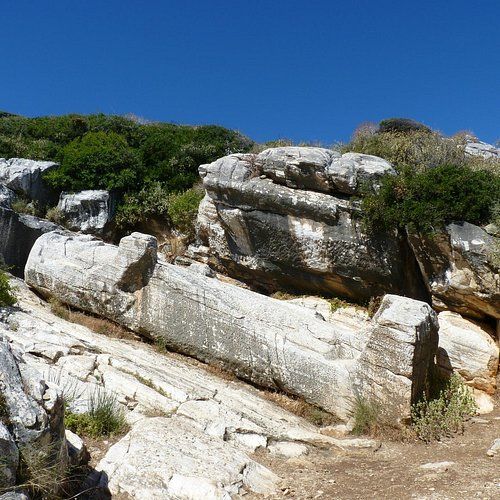
The Kouros of Flerio is 4.7 metre long statue (Kouros) of white Naxian marble, located in a village garden in Melanes [de], a small village on Naxos, one of the Cycladic islands, in Greece. A second, similar kouros is located in a quarry near Melanes. They each weigh between 5 and 7 tonnes. The largest kouros on Naxos at 10.45 metres long is the Kouros of Apollonas, which weighs 80 tonnes. In most cases, kouros statues are depictions of naked male youths with their arms at their sides. Kouroi were created during the Archaic period in the 7th and 6th centuries BC. The Kouroi are the male equivalents of female statues, called Korai. Both the Kouroi at Flerio are unfinished and made of Naxian marble. They were not completed with fine details, because their feet broke during transport.
5. THE ANCIENT NAXOS AQUEDUCT

As early as the Archaic period, when Naxos island was ruled by the tyrant Lygdamis (550-524 BC), Naxians tapped the rich sources in the lush are of Flerio, Melanes and the neighboring area of Kampones in order to solve the water problem of Naxos city.
The first aqueduct (late 6th century) comprised clay pipes laid in a ditch. The second, constructed during the Roman years, features two clearly distinct phases and comprises a pipe built with hydraulic mortar, with underground and elevated sections.
Both aqueducts, following the same course, began from a source that can be seen under a later construction in a vegetable garden at Flerio today, crossed a distance of 11km and ended at a point in the city that has not been determined.
The elevated Roman-era aqueduct would have probably ended at today’s Trani Fountana –a cistern constructed during the same period. Maintenance shafts that also served as water collectors existed along the aqueduct.
The importance and degree of technical difficulty in the construction of the project is indicated by the fact that a 220-meter tunnel had to be dug through the mountain between Flerio and Kampones, in order to tap a source in the latter area.
The ancient aqueduct has been maintained, restored and can be visited at the following positions:
Barou –entry point of the underground tunnel
Kaminia -exit point of the underground tunnel
Katsopirno
Κatsopirno – Leftera
Leftera
Emazos
Perdikia
Faraggas
Agios Thalleleos
Agios Issidoros
Agios Stefanos
Τrani Fountana
Κastro
Τhe information center at Flerio has a wealth of relevant material.
6. ANCIENT SANCTUARY AT FLERIO WATER SPRING
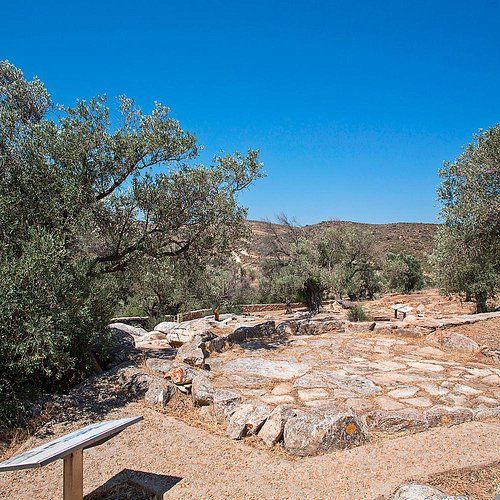
At the center of the lush district of Flerio on Naxos and just a few meters above the fountainhead of the ancient aqueduct is a sanctuary dedicated to the female deity of the fertility of the earth, and to the twin brothers Otus and Ephialtes.
Worship here began around 800 BC and continued intensively up to the 6th century, gradually declining later.
The sanctuary became the favorite place of worship for the laborers in the neighboring marble quarries who attributed properties of supernatural strength to the twin deities and considered them to be their patrons and succors in their demanding job.
The most common votive offerings to the temple were experimental, failed or deficient marble objects.
The worship of the female deity is deduced by clay female figurines and a host of objects related to the art of weaving, such as whorls and loom weights. They are all exhibited at the Melanes Museum Collection.
The excavations at the sanctuary unveiled three sacramental structures, outdoor areas for the worshiping of earth deities and a complex of auxiliary buildings.
Despite their rather humble character, these structures provide evidence of the first steps of Naxian craftsmen towards the mastering of monumental architecture –for instance, the single-piece marble doorstep, with a lintel and pilasters in one of the sacramental buildings, is considered the forerunner of monumental doorways.
7. MITROPOLIS ON-SITE MUSEUM
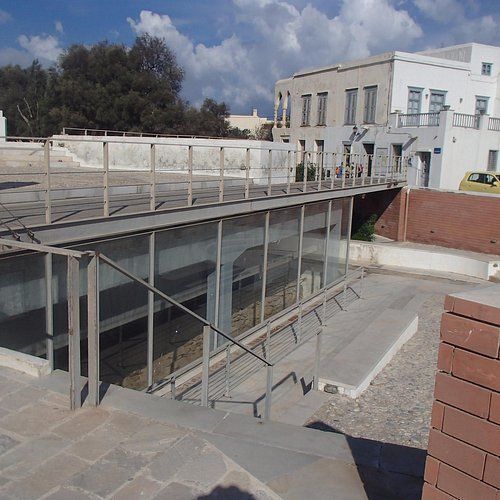
The Site Museum of Naxos Mitropolis was created in 1999 and it is the first museum of this particular type in Greece and internationally one of the few museum institutions where visitors have the opportunity to admire the antiquities in situ, at the exact location where they were unearthed during the excavations. A Mycenaean workshop of vessels, a tomb dating back to the Geometric period, and residences of the 2nd century AD. have been found on the site.
8. TEMPLE OF DIONYSUS
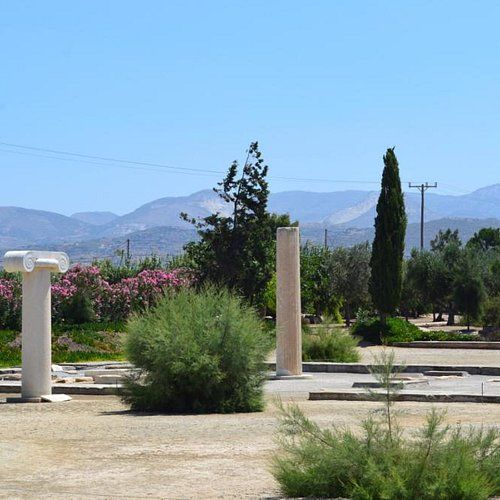
he cult of god Dionysus was much developed in the ancient times in Naxos.
Dionysus was generally much loved by the ancient Greeks as he was the god of wine, celebration, and fun.
He was thought to live in dense forests and to be always drunken by wine.
As Naxos was famous in the antiquity for its wine production that was traded all over Greece and the Mediterranean, people believed that god Dionysus resided permanently on the lush forests of Naxos. In fact, the myth says that when Theseus abandoned Ariadne on Naxos, Dionysus saw her and fell in love with the young, beautiful lady.
At first, Ariadne didn’t like the god and tried to hide in the intense greenery of the island, but Dionysus found her, they got married and Ariadne became a goddess.
To honor their god, the residents of Naxos built a large temple that partly survives till today in the modern position Iria, close to Glinado village and about 5 km from Chora.
Scientists believe that religious activity in the area started in the 13th century B.C., during the Mycenaean Era and that four successive temples were built on that exact era along centuries.
The ruins that survive today show that the temple was built approximately in the 6th century B.C. following the Ionian architectural style. In the 1st century B.C., the Romans reconstructed it and in the 5th century A.D., after the religion of the Olympian Gods had failed, the temple was turned into a Christian church. Some restoration works have been performed in the temple and next to it, there is a small room with findings from the site.
9. CHIMARROS TOWER
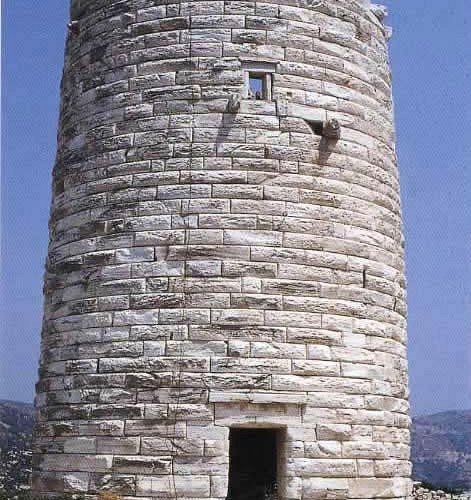
Chimarros Tower at Filoti on Naxos is considered one of the important ancient monuments of the island. Built on a hilltop by the Kalantos road, it is named after two streams (chimarros in Greek) that defined the area’s east and west.
Researchers believe the tower dates back to the late 4th century BC and view it as a fine example of Hellenistic-era defense-related architecture.
Constructed with huge marble boulders, it was circular and its original height measured approximately 20m with a 9.2m diameter at its base.
It consisted of four levels connected by a marble staircase and was surrounded by a square wall measuring 35m in length at each flank.
Today, the tower’s exterior remains preserved in considerably good condition, standing at a slightly reduced height of approximately 15m.
Large sections of its interior have either collapsed or are dilapidated.
Parts of the walling at the perimeter still remain, as do remains of constructions that once stood within the property. Some of them were olive mills.
As is also the case with other similar fortified towers in the Cyclades, the precise purpose and usage of Chimarros Tower on Naxos is not clear.
Purposes varied depending on eras and locations. Some research suggests that Chimarros Tower stood as a base for a small military unit and also served as a hideout for the area’s residents along with their livestock.
According to another view, it served as a transmission point for messages in the form of fire or smoke to other similar towers on Naxos and neighboring islands.
10. PYRGOS TOU KOKKOU
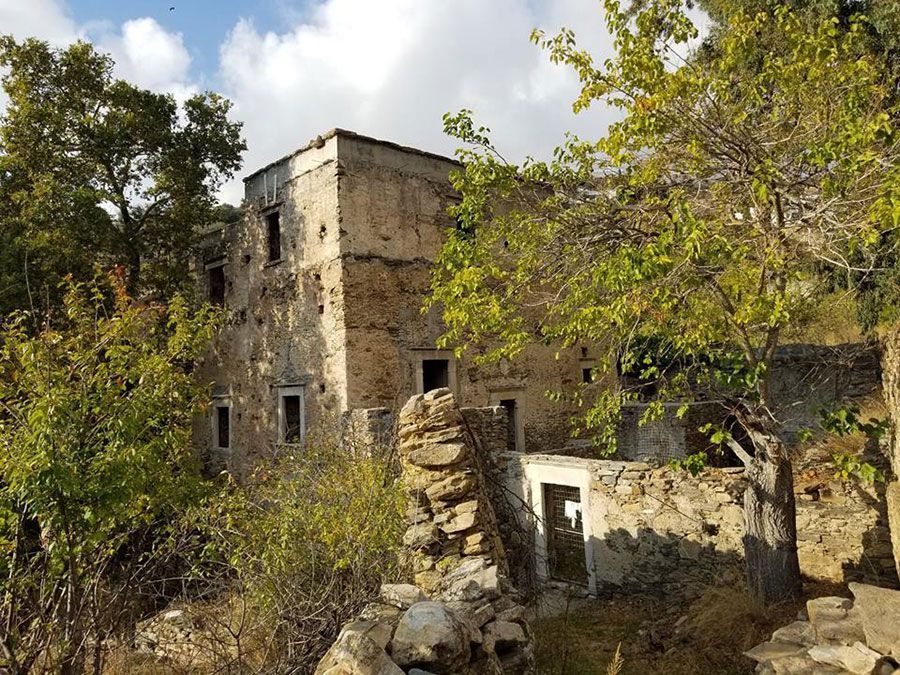
Lierado on Naxos, one of Potamia’s neighborhoods, features the impressive Kokkos Tower, built by the same-name Greek Orthodox family in the 17th century.
The remains of a watermill are seen in the basement, while the lintels bear interesting inscriptions. Tradition has it that the Kokkos tower, which once belonged to the Barozzi family, was the scene of a love story similar to that of Romeo and Juliet, involving two young members of the respective families.
Kokkos tower lay in a half-ruined state for a long time and has been recently restored by its present owner.


